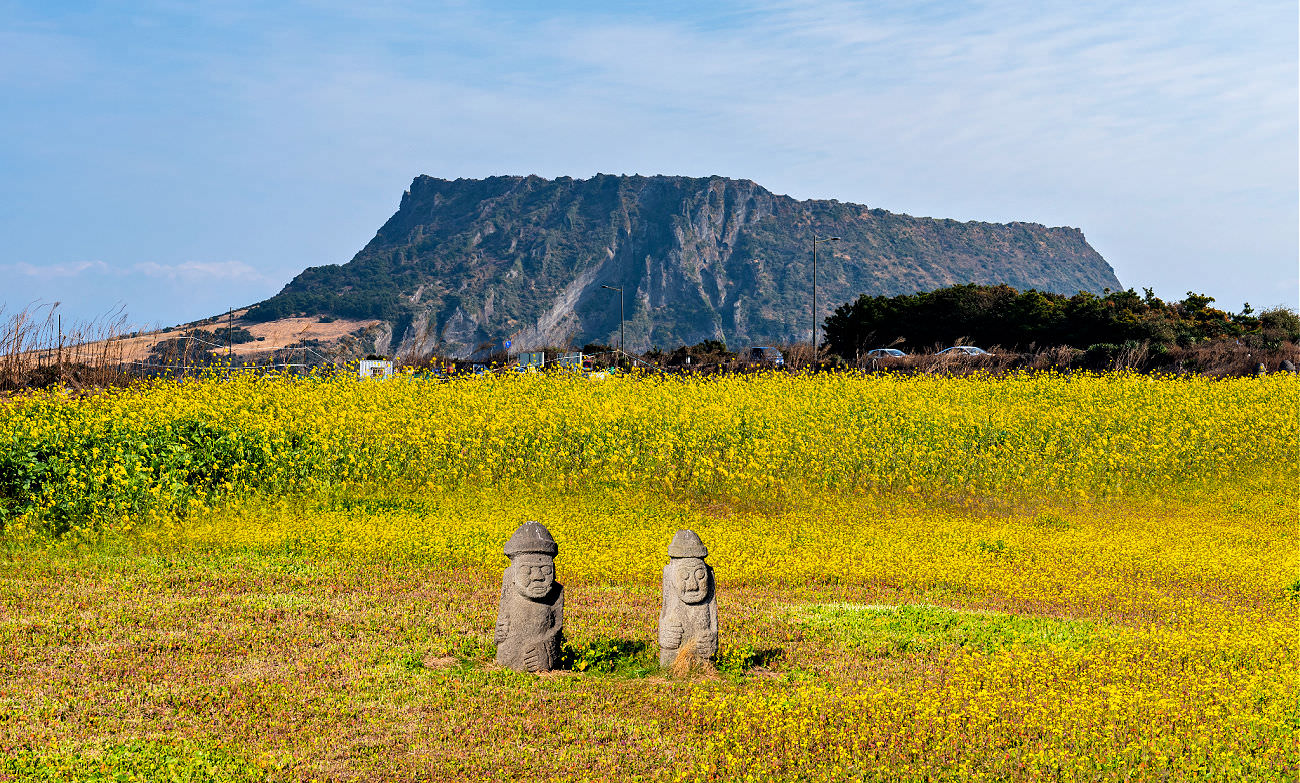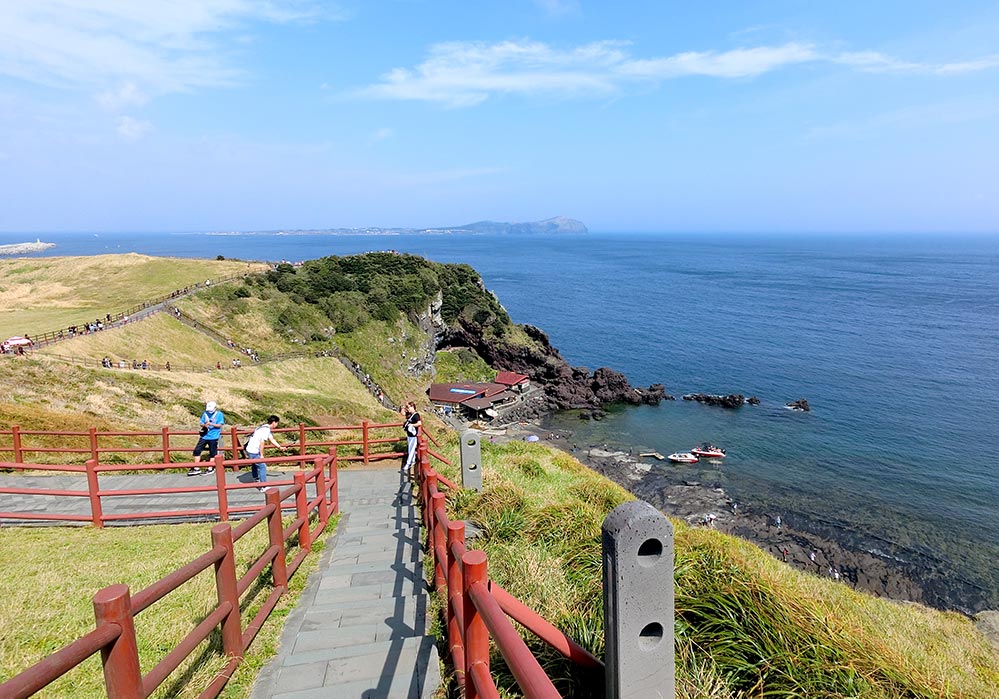Nature has a way of creating masterpieces that capture the imagination and stir the soul. Seongsan Ilchulbong, also known as Sunrise Peak, stands as a living testament to the grandeur of nature’s craftsmanship. With its dramatic volcanic landscape, breathtaking vistas, and a sense of awe that resonates with every step, exploring Seongsan Ilchulbong is a journey into the heart of natural beauty and wonder.
Rising from the Earth: The Birth of Seongsan Ilchulbong
Seongsan Ilchulbong is a volcanic cone that stands proudly on Jeju Island, South Korea. This UNESCO World Heritage site was born from the depths of the Earth’s core, shaped by the convergence of fiery forces and geological shifts. The result is a stunning natural formation that has captivated the hearts of both locals and travelers alike.
The Mystique of Sunrise Peak

As the sun’s first rays paint the sky with hues of gold and crimson, Seongsan Ilchulbong awakens, casting its majestic shadow against the canvas of dawn. The peak’s name, Sunrise Peak, is a testament to the awe-inspiring spectacle that takes place each morning. This enchanting event draws visitors from all corners of the world, who gather to witness the sun’s ascent from the East Sea, casting its warm embrace upon the island’s rugged terrain.
Ascending to Greatness: The Journey to the Summit
The ascent to Seongsan Ilchulbong’s summit is a pilgrimage that promises both physical challenge and spiritual reward. A well-maintained trail winds its way up the slopes, leading adventurers through a diverse array of flora and fauna. As the path snakes upward, the panoramic views become increasingly breathtaking, offering glimpses of the coastline, neighboring islands, and the verdant landscape that stretches to the horizon.
Unveiling the Bowl-Shaped Crater
Reaching the summit is a moment of triumph, where the rewards of the journey become evident. At the heart of Seongsan Ilchulbong lies a natural wonder—an expansive bowl-shaped crater. This immense depression is a testament to the volcanic forces that shaped the landscape, and it serves as a reminder of the Earth’s ever-evolving nature. As visitors stand at the crater’s edge, they are treated to a spectacle that transcends time—an awe-inspiring glimpse into the heart of our planet’s creative forces.

The Dance of Seasons: Seongsan Ilchulbong’s Changing Beauty
Seongsan Ilchulbong is a canvas that nature paints with different colors throughout the seasons. In spring, vibrant wildflowers carpet the slopes, transforming the peak into a living tapestry. Summer brings lush greenery and a lively buzz of life, while autumn drapes the landscape in a rich tapestry of reds, oranges, and yellows. Even winter holds its own charm, as a serene tranquility blankets the peak in a cloak of snow.
Cultural Connections and Mystical Legends
Seongsan Ilchulbong is more than just a geological marvel—it is intertwined with the culture and history of Jeju Island. Local legends speak of its creation, with tales of dragons, gods, and ancient battles woven into its narrative. For generations, Seongsan Ilchulbong has been a source of inspiration and reverence, a symbol of the island’s connection to the Earth and the cosmos.

Exploring the Surroundings: Udo Island and Beyond
The exploration of Seongsan Ilchulbong is not limited to the peak itself. Nearby lies Udo Island, a tranquil oasis known for its stunning beaches, clear waters, and laid-back atmosphere. Udo Island offers a perfect complement to the rugged majesty of Seongsan Ilchulbong, inviting visitors to relax, unwind, and connect with the gentle rhythm of island life.

Preserving the Splendor for Generations to Come
The significance of Seongsan Ilchulbong extends beyond its geological beauty; it serves as a reminder of the delicate balance between nature and human interaction. Efforts to preserve and protect the site are crucial to ensure that future generations can experience the same sense of wonder and reverence that it evokes today. Responsible tourism practices, conservation initiatives, and education play pivotal roles in safeguarding this natural treasure.
In Conclusion: Seongsan Ilchulbong’s Enduring Magic
Exploring Seongsan Ilchulbong is an invitation to witness the Earth’s creative symphony—a timeless performance that unfolds with every sunrise, every step taken, and every gaze cast upon its beauty. This geological masterpiece embodies the essence of nature’s artistry, capturing the imagination and inspiring a profound connection with the world around us. As visitors ascend its slopes, peer into its crater, and breathe in its panoramic vistas, they become part of a story that has been unfolding for millions of years—one that reminds us of our place in the grand tapestry of existence.
Did you like this article? Do not hesitate to share it on social networks and subscribe to Discover the World on Google News to not miss any articles!